Snowboard and skiing gear buying guide
You hop off the chairlift and slide over to the edge. It’s the steepest slope you’ve ever seen. Butterflies flutter in your stomach. But as you push yourself over the edge and into the fresh snow, fear is replaced by fun. Whether you’ll be going skiing or snowboarding, Gear Guy fills you in on all the gear you need, plus a couple of tips and tricks that’ll have you shredding in no time.
Cheap vs. Steep: “Cheap” gear listed here is great stuff. It has been studied and tested and ranks among the best offerings in its price range. When you’re ready to move up to higher-end gear, the “Steep” options provide room to grow. You can often find great deals online.
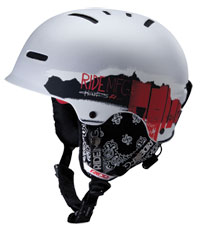 HELMETS
HELMETS
News flash: Wearing a helmet on the slopes is cool. It means you’re smart and that you’re charging hard enough to need a brain bucket. Wear only an ASTM- or CE-approved helmet. Some helmets come with added ventilation, removable earpads, even built-in headphones. But most important, pick one that fits comfortably snug.
- Cheap: Salomon Drift Kid ($60; salomon.com)
- Steep: Ride Duster ($100; ridesnowboards.com)
 GOGGLES
GOGGLES
Goggles are meant to keep blowing snow and wind out of your eyes so you can concentrate on shredding the hill. The fit should be snug with no big gaps between your face and goggle where air can enter. Also, make sure the top of the goggle frame meets the helmet as closely as possible. Different lens tints work better in different snow conditions. Pick a darker lens for very bright days; yellow or rose tints work well in lower light. Some goggles even come with interchangeable lenses.
- Cheap: Oakley E Frame ($39; oakley.com)
- Steep: Smith Stance ($90; smithoptics.com)
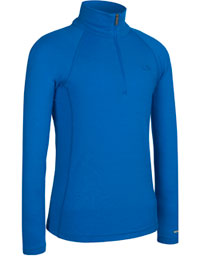 BASE LAYER
BASE LAYER
If you’re wearing a regular cotton T-shirt as a base layer, you must be stuck in the 1980s! What you need next to your skin is a quick-drying fabric like a synthetic blend or wool, which wicks moisture away from your skin while keeping you warm. A zippered mock T gives you the maximum ability to regulate your body temp. Should fit snug, but not too snug.
- Cheap: Polarmax PMX Team Shirt and Tech Pant ($25 each; polarmax.com)
- Steep: Icebreaker Longsleeve Crewe and Legging ($60 each; icebreaker.com)
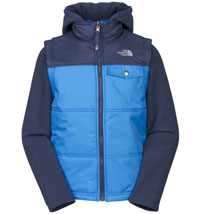 MID LAYER
MID LAYER
If you’ve learned anything from Gear Guy about dressing for the outdoors, it’s this: Wear layers! If you get hot, take a layer off. Get cold, put one on. Fleece or down pullovers and jackets make great mid layers. Should fit relatively close to the body but with enough room to move.
- Cheap: Eddie Bauer First Ascent Cloudlayer fleece pullover ($20; eddiebauer.com)
- Steep: The North Face Vesty Vest ($89; thenorthface.com)
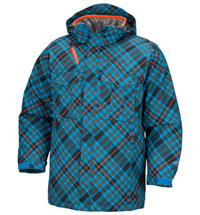 JACKET
JACKET
This outer layer protects you from the wind, snow, sleet, etc. Look for a jacket that’s waterproof and breathable. Some come with built-in insulation or removable layers depending on the weather. A few zippered pockets are nice, but you don’t need too many gadgets. Should be roomy for mobility and to accommodate extra layers, but not so loose that it’ll get caught on the ski lift.
- Cheap: Columbia Rugged Peak Jacket ($115; columbia.com)
- Steep: Patagonia 3-in-1 Snowshot Jacket ($339; patagonia.com)
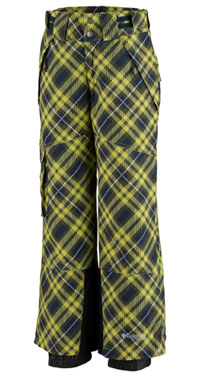 PANTS
PANTS
Eventually, you’re gonna fall. And when you do, you’ll need a good pair of waterproof/breathable pants to keep you dry and warm. Wear them loose, but not baggy, for mobility.
- Cheap: Columbia Bugaboo Tech Pant ($85; columbia.com)
- Steep: Sierra Designs Rad Pants ($199; sierradesigns.com)
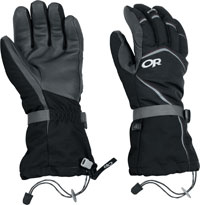 GLOVES
GLOVES
Look for gloves that are warm and waterproof/breathable. They need to fit tight enough so you have plenty of dexterity with your fingers and no unnecessary bulk. Leather palms can help with better feel, too.
- Cheap: Kombi Gore Method Jr. ($50; kombisports.com)
- Steep: Outdoor Research HighCamp ($79; outdoorresearch.com)
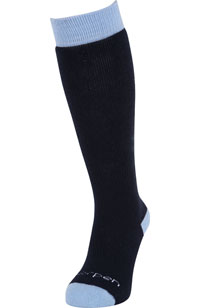 SOCKS
SOCKS
Wear a pair of mid-weight synthetic or merino wool socks — never cotton tube socks because they won’t keep your feet warm once they’re sweaty and wet. Make sure your socks are close-fitting because if they’re too loose, they’ll bunch up and cause blisters.
- Cheap: Lorpen Kid’s Merino Ski ($15 for 2 pair; lorpen.com)
- Steep: Icebreaker Kids Snow Mid Over the Calf ($15; icebreaker.com)
 SKIS
SKIS
You’ll spend somewhere between $350 to $900 for a pair of skis. In general, look for skis that come up to about your nose or forehead. For a variety of all-mountain type skiing, pick a ski with a waist of about 70 to 80 millimeters and a soft or medium flex, which is best for beginner and intermediate skiers.
- Cheap: Salomon Shogun Jr. ($275; salomon.com)
- Steep: K2 Bad Seed ($550; k2skis.com)
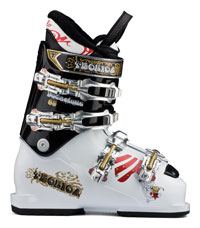 SKI BOOTS
SKI BOOTS
Well-fitting boots are key to maintaining control of your skis. Look for four-buckle boots with customizable features for fine-tuning a better fit. The flex of your boots is also important. Beginners should look for a less stiff boot. Ski boots should fit one-half size to a full size smaller than street shoes.
- Cheap: Nordica GP TJ ($185; nordicausa.com)
- Steep: Tecnica Bodacious 65 Jr. ($375; tecnicausa.com)
SKI BINDINGS
Bindings are the connection between you and your skis. Step in and they click as they lock in. When you wipe out, the binding releases and tiny brakes pop down to stop your skis from skiing away from you! How easily they release can be adjusted; most beginners should choose a low-release setting. Most new skis are paired with bindings and will cost an extra $150 to $300.
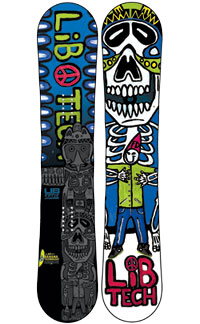 SNOWBOARD
SNOWBOARD
Expect to spend between $250 and $500 for a new snowboard. Your board should come up to right around your chin. You also want to make sure the board is wide enough so that your feet don’t hang over the edge when you turn. The next thing to consider is board stiffness. Softer flex is best for beginners because it’s easier to ride. More stiffness helps advanced riders on steeper slopes.
- Cheap: Rome Label Rocker ($260; romesnowboards.com)
- Steep: Lib Tech Lib Ribber ($349; lib-tech.com)
 SNOWBOARD BOOTS
SNOWBOARD BOOTS
Make sure your boots are comfortable from the first time you try them on. They should fit snug in the heel and forefoot with some wiggle room for your toes. For starters try a half-size smaller than your street shoes. In general, entry-level boots have traditional shoe lacing; higher-end boots use a tightening system that lets you easily dial in the tightness with a knob.
- Cheap: Ride Orion ($129; ridesnowboards.com)
- Steep: DC Judge ($270; store.dcshoes.com)
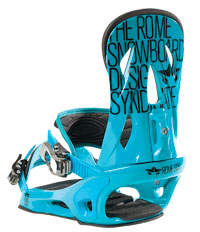 SNOWBOARD BINDINGS
SNOWBOARD BINDINGS
Your board is attached to your feet with bindings. There are two types: straps and step-in. Strap bindings are the most popular and are the best choice. They can be cinched down super-tight using the ratchet straps, while step-ins lock you in just by stepping down on the binding.
- Cheap: Rome Shift ($120; romesnowboards.com)
- Steep: GNU Park ($239; gnu.com)
WINTER SPORTS TIPS
• Stay Hydrated. You might not be sweating and you might not feel thirsty, but your body probably is. Cold weather and active winter sports can dehydrate you quickly, so be sure to drink enough water while skiing or riding. Some guys even wear hydration packs to keep liquids close by.
• Take a Lesson. No question, the fastest way to get past the beginner blues is to take a ski or snowboard lesson or two. Most ski resorts offer lessons.
• Shop in Summer. One of the best ways to get a good deal on ski or snowboard gear is to shop during the off-season — most snow shops have good sales starting in March. You can sometimes find quality used gear in your local newspaper classified ads or online.
• Rent First. If you’re unsure about what type of skis or board would be best for you, rent your gear. Most shops have rentals and demo equipment, and some might even offer full season leasing of a whole setup for around $150 to $200.
I got a baclava to put under my ski helmet. It really helps.
New Ski Gear is very expensive but good used ski gear can be purchased at a ski swap which is held at most ski areas every fall. You also have ski patrollers to assist you and advise you in purchasing equipment.
I recommend using a ski mask and or a beanie for head warmpth and some long johns as a base layer for your legs
do you have to us snowboard boots for snowboarding or can u use snow boots?
reply to frodo baggins: you have to use snowboarding boots for snowboarding, snowboard boots are meant to fit in the bindings.
Frodo Baggins, I believe that you have too use actual snow boarding boots as they are made better than most regular snow boots. That and they are especially made for snowboarding.